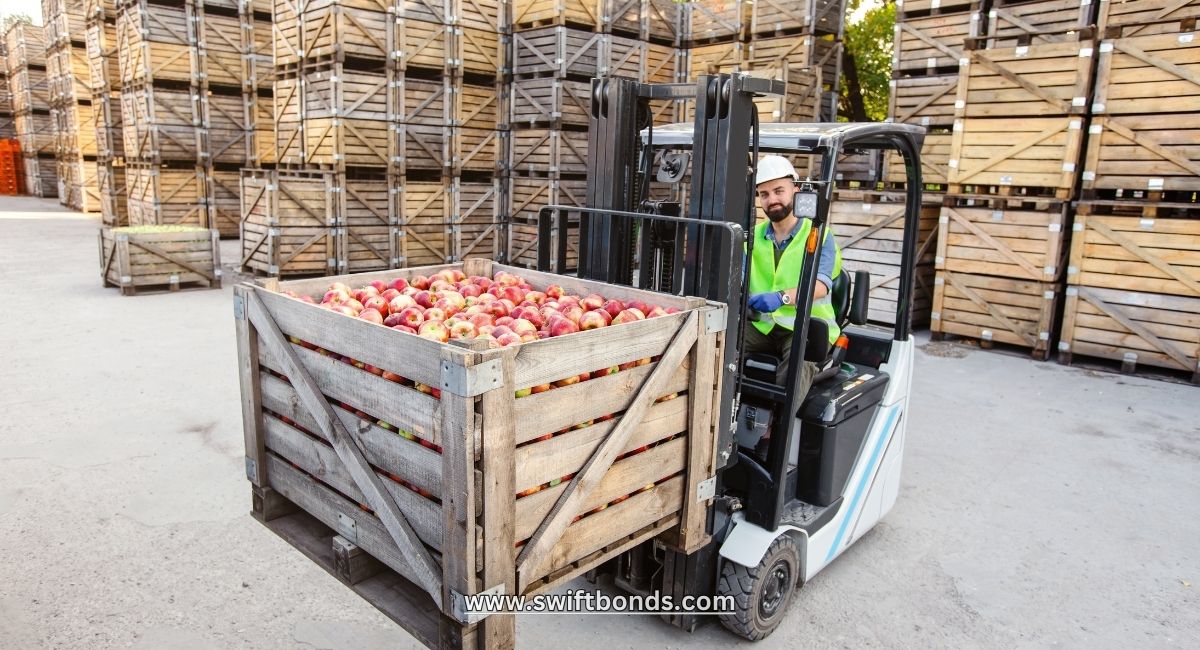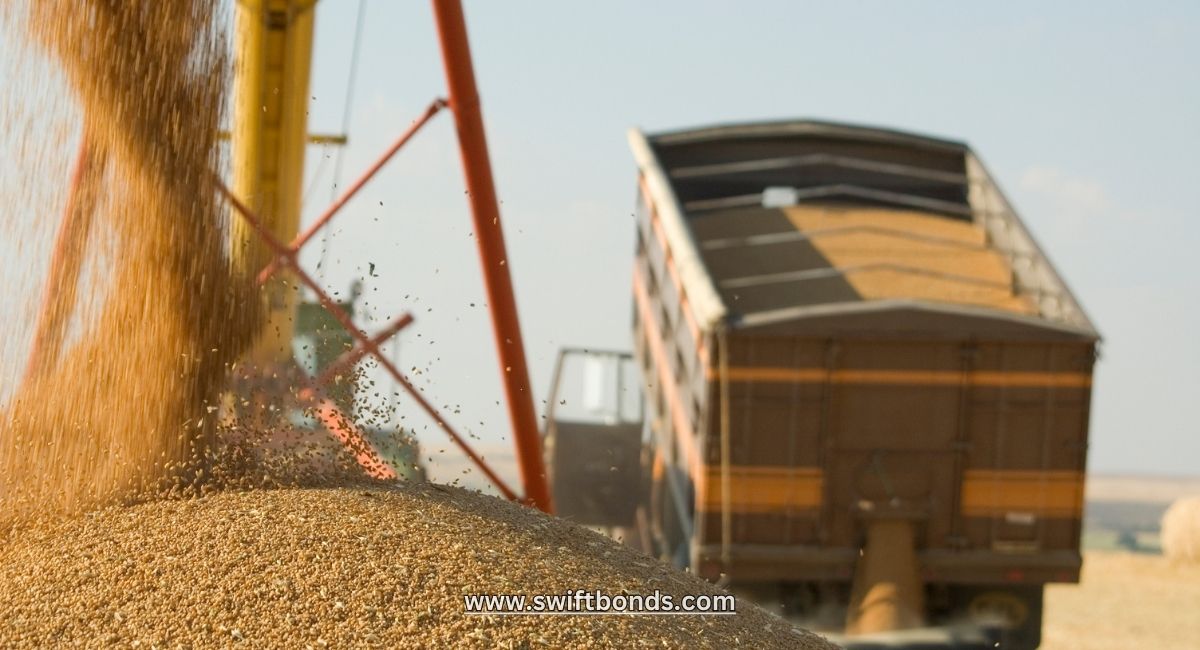Get an Instant Quote on Commodity Dealer Bond
Introduction
From our perspective, commodity dealers operating in Great Falls, Montana, want to build trust, conduct fair transactions, and follow the rules that protect producers and buyers alike. A dealer’s reputation matters—but so does compliance. The Montana – Commodity Dealer Bond exists to protect producers, farmers, and other suppliers from financial loss if a dealer fails to pay for purchased commodities. It’s not just a regulatory requirement—it’s a commitment to financial accountability and ethical trading.
This surety bond is mandated by the Montana Department of Agriculture for individuals or companies purchasing agricultural commodities from producers. It acts as a safety net, covering claims if the dealer defaults on payment or engages in unlawful trade practices. Without this bond in place, a dealer cannot legally conduct transactions in Montana’s regulated commodity markets.
This type of bond serves a different purpose than bonds in other industries. For instance, the Montana Board of Oil and Gas Conservation Bond – Individual Well Bond – Form 3 ensures environmental obligations for oil well operators, while the Montana – Commodity Warehouse Bond secures goods stored on behalf of producers. The Commodity Dealer Bond, however, focuses solely on protecting payments during the sale or transfer of agricultural products.

Montana Dealers Often Misunderstand Bonding Rules
We’ve noticed that many commodity dealers mistakenly believe their license is enough to operate legally. It isn’t. Without the Montana – Commodity Dealer Bond, a license application is considered incomplete. This can delay operations, trigger fines, or even lead to license suspension. Some assume their general liability or business insurance will cover bond requirements. That’s incorrect. A surety bond is not the same as an insurance policy—it’s a financial guarantee benefiting third parties, not the dealer.
There’s also confusion around which bond applies to which type of operation. Some think the Montana – Commodity Warehouse Bond meets the requirements for dealer licensing, but warehouse bonds protect stored products, not financial transactions. Similarly, the Montana Board of Oil and Gas Conservation Bond – Individual Well Bond – Form 3 guarantees environmental cleanup of well sites, not payment for agricultural goods.
Another misconception is that bonds are a one-time requirement. In reality, the Commodity Dealer Bond must be renewed annually, and the amount may be adjusted based on the dealer’s volume. Misunderstanding these nuances can stall business operations or create avoidable legal exposure.
Swiftbonds Supports Montana Agriculture With Reliable Bonding
Based on our experience, commodity dealers in Montana benefit from clear guidance, fast service, and reliable documentation. That’s why Swiftbonds has become a trusted partner for both small dealers and large agricultural businesses seeking compliance through bonding.
We provide:
-
Fast, online bond applications approved by the Montana Department of Agriculture
-
Custom bond amounts based on state guidelines and dealer volume
-
Competitive pricing from A-rated sureties
-
Easy renewals and compliance tracking each license year
-
Support for related bonds such as the Montana – Commodity Warehouse Bond and Montana Board of Oil and Gas Conservation Bond – Individual Well Bond – Form 3
Dealers who work with Swiftbonds avoid the delays that often come from incomplete or improperly formatted bond submissions. Our team knows exactly what the state expects and delivers documentation that meets those standards the first time.

3 Steps To Get Your Montana Commodity Dealer Bond
What we’ve discovered is that the licensing process moves faster when the bonding portion is handled early and correctly. Here’s a step-by-step path to secure your Montana – Commodity Dealer Bond:
- Review Licensing Requirements – Visit the Montana Department of Agriculture and review the Commodity Dealer Licensing Program. You’ll find details about when bonding is required and how bond amounts are calculated.
- Calculate The Bond Amount Based On Volume – The state uses your expected volume of purchases to determine the bond amount. The minimum bond is $20,000, but it may be higher depending on the scale of your operation.
- Apply With Swiftbonds For Immediate Issuance – Fill out the online application. Swiftbonds will deliver a compliant bond form quickly and file it with the Department if needed. We’ll also help with renewals or adjustments if your business grows.
This process differs from that of oil and gas operators filing a Montana Board of Oil and Gas Conservation Bond – Individual Well Bond – Form 3, which is based on well depth and drilling activity. And it’s not the same as obtaining a Montana – Commodity Warehouse Bond, which protects goods held in storage. Each bond is tailored to its purpose.
Avoiding Noncompliance Protects Your License And Reputation
In our observation, the biggest mistake dealers make is waiting too long to secure their bond. This can hold up the licensing process and create gaps in legal authority to operate. In some cases, dealers continue to purchase commodities without being bonded—an act that can lead to fines, canceled contracts, and civil penalties.
Another risk is underbonding. If your volume increases but your bond amount doesn’t, the state may find your bond noncompliant. That can lead to demands for immediate correction and may jeopardize your license. Unlike other bonds like the Montana – Commodity Warehouse Bond, where the exposure is on the stored product, the Dealer Bond is tied to payment security. Any misstep can put your entire purchasing operation at risk.
Just as environmental compliance is enforced through the Montana Board of Oil and Gas Conservation Bond – Individual Well Bond – Form 3, financial compliance in agriculture is enforced through the Dealer Bond. And regulators take it seriously.

Compliance Brings Confidence To Montana’s Commodity Market
We’ve learned that dealers who prioritize bonding see smoother audits, stronger relationships with suppliers, and faster licensing renewals. A properly filed Montana – Commodity Dealer Bond communicates to producers that you’re a trustworthy trading partner with secure financial backing. That reputation can be the difference between winning and losing supplier relationships.
Bonding isn’t a burden—it’s a badge of legitimacy. When it’s backed by Swiftbonds, the process becomes one less thing to worry about. Whether you’re pairing this bond with a Montana – Commodity Warehouse Bond for storage or ensuring energy compliance with a Montana Board of Oil and Gas Conservation Bond – Individual Well Bond – Form 3, we’ll help you meet all state requirements without stress or delay.
Swiftbonds helps you get bonded and stay bonded, so your business stays focused on growth and success.
Montana Construction Law And Performance Bond Compliance
While the Montana – Commodity Dealer Bond is governed by the Montana Department of Agriculture, those engaged in construction, infrastructure, or energy projects should also be aware of the Montana Little Miller Act, outlined in Montana Code Annotated § 18-2-201. This law mandates performance and payment bonds for public construction contracts exceeding $50,000. It protects project owners and taxpayers against incomplete work or unpaid subcontractors.
Meanwhile, the Montana Board of Oil and Gas Conservation Bond – Individual Well Bond – Form 3 is enforced under Montana Administrative Rules Title 36, Chapter 22, ensuring proper reclamation of well sites.
For any agriculture-related bonds, including both the Montana – Commodity Dealer Bond and Montana – Commodity Warehouse Bond, you can review requirements and forms directly through the Montana Department of Agriculture’s Licensing Portal.
Each of these bonds serves a distinct role but shares the same purpose—public protection through financial accountability.

Conclusion
We’ve come to appreciate that the Montana – Commodity Dealer Bond is more than a legal requirement—it’s a signal of credibility and commitment to fair trade. When you file this bond correctly, you not only comply with Montana law, you prove to suppliers and regulators alike that your business is trustworthy.
Swiftbonds simplifies this process for commodity dealers across Great Falls and throughout Montana. Whether you’re purchasing crops, storing them under a Montana – Commodity Warehouse Bond, or drilling oil wells backed by a Montana Board of Oil and Gas Conservation Bond – Individual Well Bond – Form 3, we offer clear guidance and fast results—every time.
Frequently Asked Questions
What does the Montana Commodity Dealer Bond cover?
We’ve often noticed that dealers assume the bond protects their business. It does not. The Montana – Commodity Dealer Bond protects producers by guaranteeing payment for agricultural commodities. If a dealer fails to pay, the bond covers the resulting financial loss.
How is this different from a commodity warehouse bond?
We’ve often noticed confusion between the two. The Montana – Commodity Warehouse Bond protects goods in storage, while the Montana – Commodity Dealer Bond protects payments owed to producers. They apply to different parts of the supply chain.
What determines the required bond amount?
We’ve often noticed uncertainty about how amounts are set. The Montana Department of Agriculture bases the bond amount on your expected annual commodity purchase volume. The minimum bond starts at $20,000 and increases with scale.
Is the bond required before I can start buying commodities?
We’ve often noticed timing questions. Yes, the bond must be filed and approved before the state will issue your license to operate legally. No transactions should take place until the bond is active.
Can Swiftbonds help me renew or adjust my bond?
We’ve often noticed confusion about renewals. Yes, Swiftbonds offers renewal support and helps adjust your bond if your business volume changes. This keeps your bond valid and your license in good standing year after year.


